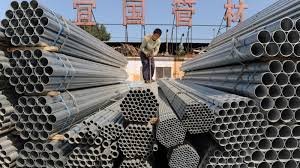Globaltraded.com — Wheat is a staple food consumed by millions worldwide, making it one of the most traded commodities in the global market. The demand for wheat has been steadily increasing, and as a result, certain countries have emerged as the largest wheat importers on the planet. In this report we explore the top 5 wheat-importing nations .
1. Egypt
Egypt has consistently ranked as one of the world’s largest wheat importers. With a population exceeding 100 million people, the country’s demand for wheat is substantial. Egypt has limited arable land and relies heavily on wheat imports to meet its domestic consumption needs. The government has implemented measures to secure wheat supplies, making it a significant player in the global wheat market.
2. Indonesia
Indonesia is the world’s fourth-most populous nation and boasts a strong appetite for wheat-based products. The country depends on imports to meet its ever-growing demand for wheat, often sourcing wheat from various countries, including Australia, the United States, and Canada.
3. Algeria
Algeria is another prominent wheat-importing nation. The country’s consumption of wheat products is substantial, and it largely relies on foreign wheat imports to meet this demand. Algeria’s wheat imports primarily come from countries such as France, Canada, and the United States.
4. Brazil
Brazil, a country known for its agricultural prowess, might come as a surprise on this list. While Brazil is a leading wheat producer, it still imports significant quantities of wheat due to the unique preferences of its consumers. This reliance on imports for different wheat varieties showcases the global diversity in wheat products.
5. Nigeria
Nigeria, the most populous country in Africa, also ranks among the world’s top wheat importers. The nation’s rapidly growing population and evolving dietary preferences have driven the demand for wheat-based products. This demand often necessitates wheat imports, primarily from countries like Russia, the United States, and Canada.
Despite being the largest wheat importers, many of these nations have made strides in bolstering their domestic wheat production capabilities. Investments in agricultural technology, research, and infrastructure have helped enhance their self-sufficiency in wheat production. However, the reliance on imports remains due to the unique preferences and consumption patterns of each country.

These top 5 wheat-importing nations continue to play a vital role in the global wheat market. As they balance their imports with efforts to bolster their domestic wheat production, their role in shaping the dynamics of the wheat industry remains significant. The global community will closely watch how these countries adapt to evolving consumer preferences and food security concerns in the coming years.
























































